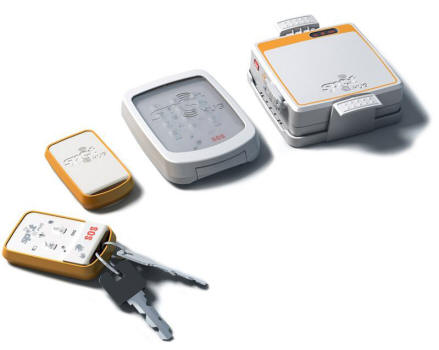|
gps
tracker
spot hug

I had several requirements when I was in search
for a GPS tracker for our camper.
* There must be an alert if the device is armed and the trailer is
moving.
* The device must be battery backed so that it can continue to
function if power to the main trailer battery is severed.
* The response from the device must be in a suitable format that
makes it easy to plot a location into Google maps.
* The device must let me know when suspicious activity occurs. I
donít want to query the device to find out if there is a problem.
* The device must work in areas without cellular coverage.
The last point ruled out the myriad of trackers that consumed a SIM.
In our experience, it didn't take long to be off a main road and be
in an area without cellular coverage, thus defeating the point of
the tracker.
What I really wanted was a device like a
SPOT
Personal Tracker that could be permanently mounted and connected
to an external power source. The SPOT Personal Tracker has several
nice features such as a tracking mode where every ten minutes, a
Google map is updated with your current location. This can be useful
when friends or family are interested to see where you are. All
communications are performed via satellite, so there is no need for
any cellular coverage.
Unfortunately I discovered that a SPOT Personal Tracker wasn't
capable of accepting an external power source.
All this time I had been looking at the Australian SPOT website, and
by chance I thought I'd have a look at the US SPOT website. To my
surprise they offer a product that appeared to suit my needs
perfectly - the
SPOT HUG.
This device is aimed at owners wishing to track their boats. There
are three components to the HUG product.
* The satellite transceiver.
* A controller pad.
* A key fob.
The transceiver comes with four lithium AA batteries along with
cabling for (optional) permanent mounting to a 12-24volt external
power supply. If the external power supply is cut then the lithium
AA batteries are used. The controller pad is paired with the
transceiver and control various functions of the transceiver such as
arming the device, setting the device into track mode, or sending a
preconfigured email to friends & family to let them know that we
have arrived safely for the day and the like. For some functions,
such as disarming the tracker or changing the sensitivity of the
vibration detection, a PIN must be entered into the controller pad.
The key fob allows some basic control of the transceiver. Also if
the transceiver is armed, the trailer is on the move, and the key
fob is not in range, then the transceiver assumes that the movement
is unauthorised and notifies the monitoring station in the US
as
described here.
The asset tracking does indeed work.
For the first few times that we had driven off for a camping trip
after the tracker was installed, I had forgotten to disarm it. After
a few minutes of driving, my mobile phone began to ring. Since I was
driving I couldn't answer the call, however once my phone had rung
out, my wife's mobile phone began to ring. The caller had a
concerned voice indicating that our trailer was on the move and that
they were tracking it. We apologised that we had forgotten to disarm
the tracker and they let us know that they were glad we didn't have
to deal with the thought of a stolen trailer. When I went to the
tracking website later that day I could see our trailer's route on a
Google map, along with markers indicating when and where on the
route the monitoring station had disabled their tracking of our
"stolen" trailer.
The transceiver also accepts up to four sensor inputs. For a boat,
this might be used to detect engine ignition or water ingress. A
sensor input could be connected to an appropriate switch and used to
detect an open hatch / tail gate / tool box etc on a trailer. If the
tracker is armed and a sensor is triggered, then an alert is sent.
Every morning the device lets me know of its current status -
Power Source: External
Monitoring Armed: No
Battery Status: Good
Vibration sensor setting: None
Sensor Alerts that are On: None
Latitude:-35.51924
Longitude:148.15286
GPS location Date/Time: 09/30/2013 09:42:32 EST
Click the link to see where your asset is located
https://maps.google.com/maps?q=-35.51924,148.15286
The above was from when we were at the Australian CamperTrailers
Group 2013 National Meet at Batlow. There is also an email alert if
the power source changes from external to battery as that may
indicate tampering with the power supply. This alert is also
displayed on a Google map.
Although I thought I was requiring a GPS tracker just for asset
tracking, the additional features that SPOT provide - especially the
"live" tracking on a Google map for friends / family to see where we
currently are, or to keep a log of our travels - have also proven
useful.
As I couldn't find a local reseller of the SPOT HUG, I resorted to
eBay and purchased from a marine supplier in the US. SPOT devices
function globally so there aren't any problems with purchasing the
device from overseas and registering it for use in Australia.
Apart from the cost of the device, the annual fees are USD$150 for
the service (including asset tracking, email alerts, SOS/email
messaging to friends/family etc). The optional Google map live
tracking is USD$50.
Thanks to Michael Wookey for the article.
february 2014
|